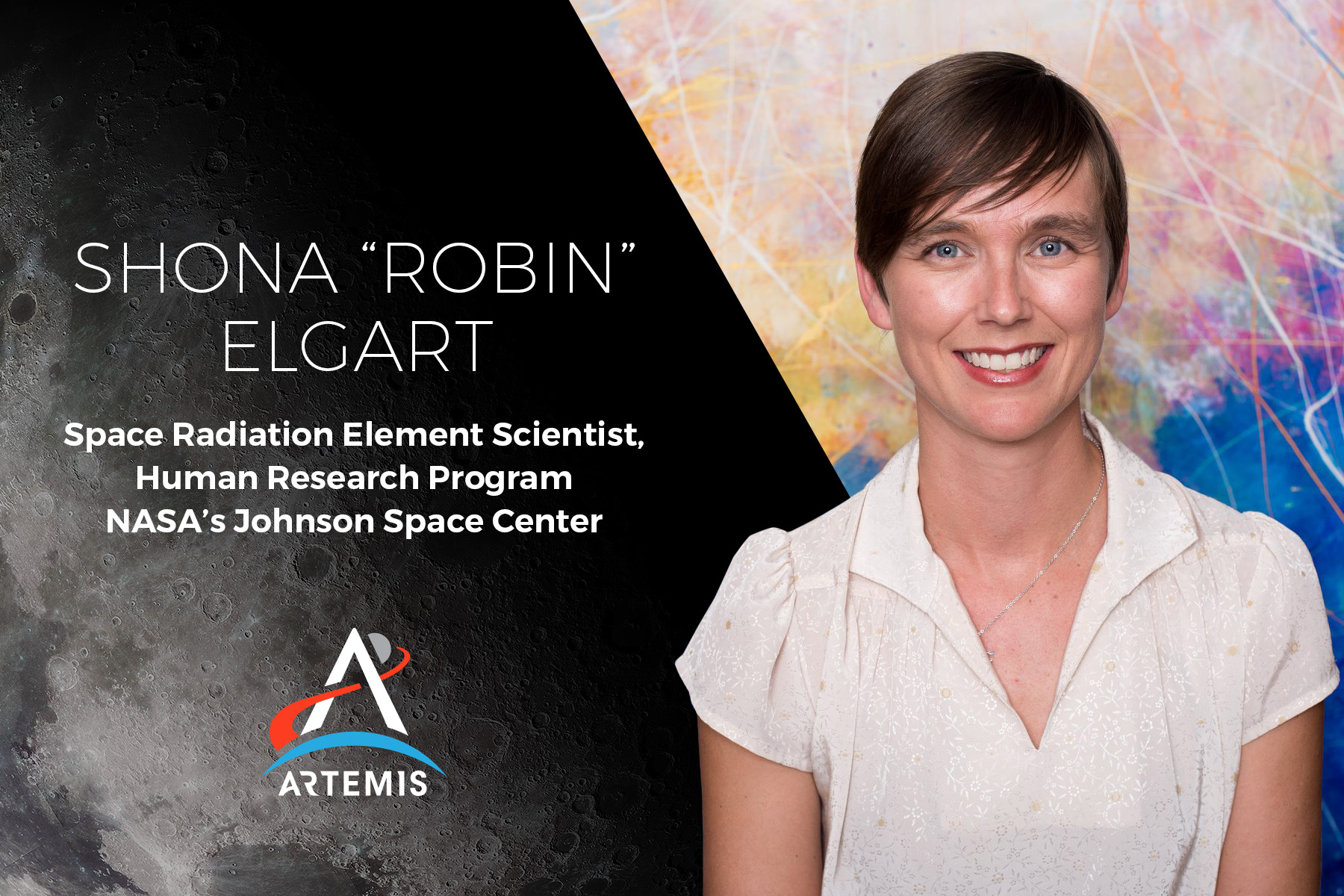As the daughter of two biologists, Shona “Robin” Elgart grew up in an environment made for a budding scientist. Now, as NASA prepares to send the first woman and first person of color to the Moon, Elgart is part of a team working to keep astronauts safe on their journey.
“As a kid, I learned about pollination and plant biology in our veggie garden, tried to dig up dinosaur bones in the backyard, and practiced how to craft evidence-based arguments over dinner table discussions,” Elgart recalled. She took this love of science to college and graduate school, earning her Ph.D. in biomedical physics from the University of California, Los Angeles.
Elgart currently serves as one of the agency’s radiation scientists at NASA’s Johnson Space Center in Houston, Texas, studying how space radiation affects the human body. During trips to the Moon through Artemis missions, astronauts will be exposed to increased levels of radiation, which could lead to health problems. Elgart is tasked with better understanding these risks and developing countermeasures to combat them.
“Space radiation’s impacts on the human body are not fully known,” Elgart said. “It is well known that exposure to radiation like X-rays can alter cellular structures and functions in humans, but the kind of radiation in space is different than what we experience on the ground.”
Elgart’s team seeks to learn how space radiation can affect health outcomes like cancer development, cardiovascular disease, and alterations to the brain and central nervous system that influence behavior and cognition. This work not only helps NASA understand what astronauts may face, but also helps her team develop strategies to protect astronauts throughout their careers and into their retirement.
Determining the scope of radiation hazards — along with best practices to protect astronauts from this radiation — is complicated, but necessary for human spaceflight.
Fortunately, Elgart relishes such complex challenges. “I’ve always liked puzzles,” she said. “I love taking a problem and figuring out how to navigate through it to find the best solution, given all the information and constraints available. That’s the essence of scientific investigation and the most rewarding part of my job.”
Check out some of our other I am Artemis features.
Image Credit: Shona “Robin” Elgart



























